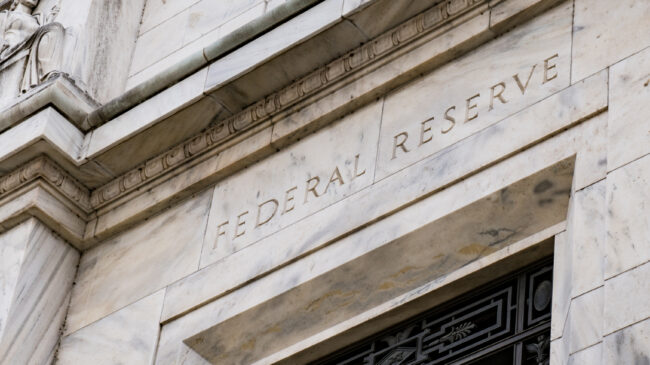Having produced price inflation with its easy monetary policy, the Federal Reserve is now expected to take its foot off the accelerator in hopes of achieving full employment with 2 percent annual CPI growth. But achieving this goldilocks scenario may not be so easy in today’s debt-addicted economy. Although necessary to fight inflation, higher interest rates will pain borrowers in both the private and public sectors.
Rate hikes will drive up federal debt service costs.
In July, the Congressional Budget Office (CBO) projected that the federal government would spend $306 million on $24.4 billion of publicly held debt, implying an average interest rate of about 1.25 percent. With such a large volume of debt outstanding, the U.S.’s annual interest costs could increase rapidly if interest rates rise.
But there are a couple of caveats.
First, some federal debt is long-term and thus its interest rates are locked in. Also, now that the Fed has bought up a large fraction of outstanding Treasury securities, much of the government’s extra interest costs are returned to the Treasury when it remits its net income to the federal government each year.
Higher interest rates also pose threats to the value of investment assets. Stock prices could fall as investors switch to fixed-income securities providing better returns. But as long as real interest rates — i.e. the difference between interest rates and inflation — are negative, most investors could be expected to stick with stocks. Home price appreciation might also weaken because higher mortgage interest rates reduce housing affordability: Buyers will have to take out smaller loans to make their target monthly mortgage payment.
But the biggest fiscal risk may stem from corporate lending. Rather than issue fixed-rate bonds, many highly leveraged companies rely on the syndicated bank loan market where most borrowing takes place on a floating rate basis. According to research from Fitch Ratings, $1.6 trillion of syndicated loans are currently outstanding with almost all borrowers carrying either speculative grade credit ratings or the lowest investment grade rating (Baa3 on Moody’s scale or BBB- from S&P, Fitch and other agencies).
Syndicated loans are distributed across multiple banks with about half of the volume packaged into Collateralized Loan Obligations (CLOs). Although analogous to the subprime Residential Mortgage-Backed Securities (RMBS) that triggered the Great Recession, CLOs have generally performed well over their 30-year history.
The loans packaged into subprime RMBS and CLO deals have high default risk, but corporate borrowers have generally proven more reliable than homebuyers with low credit scores. That may change when the Fed starts raising interest rates, especially if the hikes are precipitous.
A wave of leveraged loan defaults could harm both CLO investors and banks — to the extent that they continue to hold syndicated loans on their books. Because CLOs are well diversified, it is unlikely that defaults will impact investors in the senior AAA/Aaa rated tranches.
But if a lot of leveraged corporate borrowers are forced into bankruptcy by higher interest costs, we could see waves of layoffs. Suppliers to failing companies may also face late and/or partial payments, spreading the pain around the economy.
In this way, a sharp increase in interest rates could significantly slow economic growth or even trigger a recession.
Corporate defaults played a significant role in the 2001-2002 recession, even though the blame is more commonly put on the collapse of the dot-com stock bubble and the impact of the 9/11 terror attacks. But around the time of this recession, such big names as United Airlines, Kmart, Global Crossing, WorldCom, and Enron filed Chapter 11 bankruptcy petitions.
Congress could reduce the pressure on the Fed to raise interest rates by reining in deficits. Lower deficits would mean a reduced volume of Treasury securities coming onto the market, which push up interest rates, unless purchased by the Fed with new money. Although meaningful spending cuts seem unlikely in the current Congress, it could help by not passing the Build Back Better act — something Sen. Joe Manchin (D-W.Va.) appears to have ensured.
Although BBB proponents insist that the bill is close to deficit neutral over the ten-year budget window, CBO estimates that the measure would add $792 billion to the federal debt in the first five years after passage, with that amount partially offset in the second five years. So, in the short-to-intermediate term, BBB is inflationary. It only gets close to balancing if its various spending initiatives are not renewed by future Congresses.
But irrespective of how Congress reacts, the Fed should rethink its stimulative policies and allow interest rates to rise. Although there may be significant economic pain in the near-term, this is better than allowing inflation to become chronic, necessitating much more drastic action down the road.
A version of this column previously appeared in The Hill.

